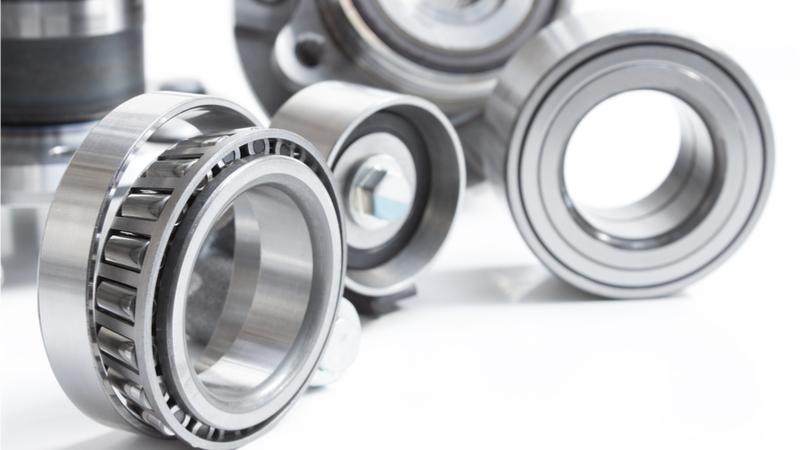Maintaining optimal atmospheres in sintering furnaces
SSI Technologies, Inc. is a leading manufacturer of stainless steel powder metal products in the US. The company specializes in high temperature sintering. Optimization of the atmosphere in the sintering furnaces is critical in controlling the properties of the end product. This is possible through Vaisala’s DMP248 Dew Point and Temperature Transmitters which monitor the furnace atmosphere at different stages of the process.
SSI Technologies, Inc., based in Janesville, Wisconsin, produces custom-made metal parts, sensors and sensor-based monitoring systems for the automotive and other industries.
The company has operated under the name SSI Technologies since 1982 and currently has 1100 employees. The Sintered Specialties Division produces metal parts from powdered raw materials by compaction and heat treatment. The company specializes in stainless steel products produced by high-temperature sintering. Peter L. Degenaar, Materials Engineer, works in technical support for two of the business units and is a specialist in continuous improvement and failure analysis. Metal components by consists of three sections: a preheat area, a high-heat sintering area and a cooling section. The metal part goes into the furnace at ambient temperature and comes out at the other end of the furnace line at ambient temperature. In between are the crucial process steps determining the quality and properties of the end product. In the burnoff furnace the lubricants added at the compacting stage are removed from the powder metal part at temperatures between 1000 and 1500 °F (500 and 800 °C). The actual sintering takes place in the high-heat sintering furnace under a hydrogen, or in some applications, a hydrogen-nitrogen atmosphere at temperatures above 2400 °F (1300 °C). Finally, the part goes through the cooling section, where cold water flows in a jacket surrounding the chamber and cools the parts before they exit the furnace into the outside air.
Furnace atmosphere is the key
The atmospheres used for sintering may perform several functions. Most typically they protect the metal parts from contact with the air. In addition, they may delube or dewax the products, control the carbon content, or remove heat efficiently and uniformly. Optimization of the furnace atmosphere gives control over the properties of the end product such as microstructure, corrosion resistance, density and hardness.
The dewpoint indicates how reducing or oxidizing the environment in the furnace is. In the preheat zone, the atmosphere is kept at a slightly oxidizing or slightly reducing level, depending on the alloy being processed. In the high-heat section, the goal is to attain an atmosphere that is as reducing as possible. This is achieved with a hydrogen atmosphere and a low dewpoint.
As Peter L. Degenaar explains: “When it comes from the preheat zone, the metal part is practically saturated with oxygen. Every open surface is a metal oxide. However, when we use a hydrogen atmosphere and a low dew point, we reduce the surface oxides and get a clean metallic surface layer which is necessary for sintering, or metal bonding, to succeed. Knowing the dew-
point is critical to the process.”
DMP248 monitors dew point throughout the process
SSI has installed Vaisala’s DMP248 Dew Point and Temperature Transmitters at different stages of the process: in the preheat section, the high-heat section and the cooling zone.
As the required properties of the atmosphere vary at different stages, the typical dew points range from -80 °F to +20 °F (-60 and -6 °C). A sampling system is used to cool down and filter the hot furnace gas before it reaches the sensor. Today, the process is adjusted manually according to the information obtained from dew point monitoring. In the future, SSI Technologies intends to tie the dew point measurement in with the furnace process computer. This would be possible via the RS232 serial output of DMP248.
Aiming for high quality and cost savings
The benefits of accurate dew point control include both improved product quality and cost savings. “If we have a minor leak in the furnace, which admits air and creates a bad atmosphere for sintering, we can make adjustments to some extent by increasing the temperature or hydrogen flow. However, that will cost us money down the road in the form of the electrical bill and excess gas use. In fact, having good dew point control in one furnace makes it possible for us to run it at 100 °F (40 °C) lower temperature than another furnace running an identical part,” explains Peter L. Degenaar.
A harsh environment requires reliable instruments
Conditions in sintering furnaces are demanding in terms of both temperature and contaminants. Metal vapors containing chromium and copper, as well as silicon and free carbon, float around in the hydrogen atmosphere as a result of particle detachment from the metal parts and furnace surfaces.
“Regarding all instrumentation, durability is a key property for us. We tested a number of technologies, but had a hard time finding a dew point transmitter that would hold up in this environment. Acting on the recommendation of a gas supplier, we purchased Vaisala’s HMP235. After a few years doing some research on what was new out there, we identified the DMP248 as something that would suit our needs even better in terms of good accuracy at low dew points. This equipment has held up very well,” says Peter L. Degenaar.
A working calibration concept
Peter L. Degenaar sends the DMP248 for calibration once a year. “We have been very pleased with the DMP248,” he says. “They are easy to use. Except for setting them up and doing a scheduled calibration, there is not much that needs to be done. That, combined with good accuracy and durability, makes it a good product for our application. Its capabilities have simply matched our requirements very well.”
DMP340 has replaced DMP248.
The article was first published in Vaisala News 157/2001 /Liisa Åström.
